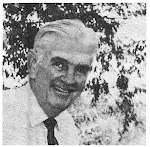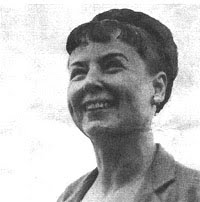I’m enchanted in discovering small bits of output from long-ago artists. Thus, I was so happy to learn Mary Mosier, a follower of this blog, has ventured back in time to track down Holling newspaper dioramas. As described in the last post here, these World Museum dioramas encouraged kids to back up the artwork on sturdy paper, cut them out, and assemble them into small dioramas of the sort they hopefully had seen in museums.
Ms. Mosier wrote and shared this enthusiasm through a news feature in the
San Antonio Light published on May 23, 1932:
FUN FOR YOUNG AND OLD
Seven-year-old Sam Hunter Jr., 439 McKinley avenue, admires one of the dioramas from the Sunday Light comic section which show three-dimension scenes of historic interest. This week the subject is Spain. Youthful readers of The Light are taking trips to foreign lands, living a while in the days of long ago. Arid all without leaving their living rooms or wherever it is they choose to spread out the Sunday paper to read the comics. In the big comic section of The Light finding a new way to learn all about the story and habits of people who lived when the world was young and when history was in the making. By means of dioramas, which show scenes in three dimensions, they can see just what the lands look like of which they read in school. By clipping out the weekly installment of “The World Museum” and cutting and pasting according to directions, scenes of foreign lands can be duplicated. This Sunday's natural history group by Holling Clancy Holling presents Spain with its brightly colored roof tops and snow capped mountain ranges. The accompanying printed matter gives succinctly the ebb and flow of different races across the Hispanic scene, tells of Columbus setting out for his new world. Each week a different land, different people will be presented in "The World Museum" in The Light's big colored comic section.
Ms. Mosier said it was “a bit of a fluke” that she found a lot of constructed dioramas from the
Cleveland Plain Dealer for sale. The 13 samples were put together so well that they could be taken apart and reassembled.
Certain of the dioramas “are quite interesting,” she says. “The ones of nature subjects (pandas, emperor penguins, mountain goats) appear to be miniature replicas of Field Museum life size versions of the same scene, complete with text describing how the animal specimens were collected, and the artists and technicians who prepared the scene/”
She has been comparing information with Joan Hoffman at the Holling Museum in Leslie, Michigan, and sharing scanned copies. Ms. Mosier says of the covered wagon topic, “Hers were the Platt and Munk [publisher of Holling books] reprints, mine being the newspaper publication. This revealed that the reprints were to the same size as full page newspaper, and had (apparently) the same level of detail. However, the newsprint color selection is printed in more subdued…and a greater variety of colors. The reprints are very bright and with a limited color selection. I am in the process of scanning these examples to a digital format in order to preserve the originals.”
It’s wonderful that this material is being archived since, by their very nature, newspapers were not meant to vbe saved. Ms. Mosier explains her dedication to this labor:
“I enjoyed Holling's books when I was a child —
Paddle-to-the Sea, Minn of the Mississippi and similar titles that he is most remembered for. As one of my current interests is American pre-history, I remembered some sections of Minn that touched on this and reacquainted myself with that book. One thing led to another and I discovered your blog, Mrs. Hoffman's work, and many other Holling's works that I had never known about.
“I am interested in paper crafting and also museum displays, and from that I became extremely interested in the World Museum features. An additional interest was that there appeared to be so few examples of them in a format similar to the original publication.
“The concept of capturing these features in a digital copy, in the original colors, is very exciting to me.” Fate, she says, brought her the collection of 13 examples on eBay. They were sold by someone with little understanding of what they were. Because they had already been cut out of the newspaper, they may have had little appeal to the typical collector of ephemera.
“I'm making digital records for my own use, and plan to build several of the dioramas for fun, but from ‘new’ printed copies,” she says. It’s not clear who owns the copyright to the World Museum artwork, but Ms. Mosier guesses it may be Platt and Munk. “It seems a shame that this and the other Holling papercraft items (the American frontiers series, the Forty-Niners, and the astonishingly beautiful eskimo village playset) are not available in print.”
“I am slowly making a listing of World Museum dioramas, dates, newspapers, where they were published, and the text on the features. This is based in the examples I have, and black and white newspaper archives I am slowly finding on line. When I exhaust this, I suppose I will start trying to find examples in hard-copy newspaper archives, starting with the ones in my state library (if any of those include the World Museum.)”
And her quest continues. She recently found a seller of single sheets of vintage comic sections, dating from 1937 and ‘38. “He had items for sale that I recognized as having appeared in newspapers that also ran World Museum. He responded to my query, writing that examples of the World Museum are pretty rare and that he himself collected them, and that he would put any ‘duplicates’ to his own collection up for sale.”
Add another credit to Ms. Mosier. She recently discovered that “the Hollings created some of the beautiful full color illustrations that appear in the first two volumes of the
My Book House series, created by Olive Beaupre Miller in 1937. (Although many of the individual selections in those date back to the 1920s, I'm unsure whether the Holling's work dates to around 1937.) The first two volumes are nursery rhymes and poetry; some being English translations:
In the Nursery is volume 1 or the series;
Storytime is volume 2. Dover has reprinted both of these in 2013.”













